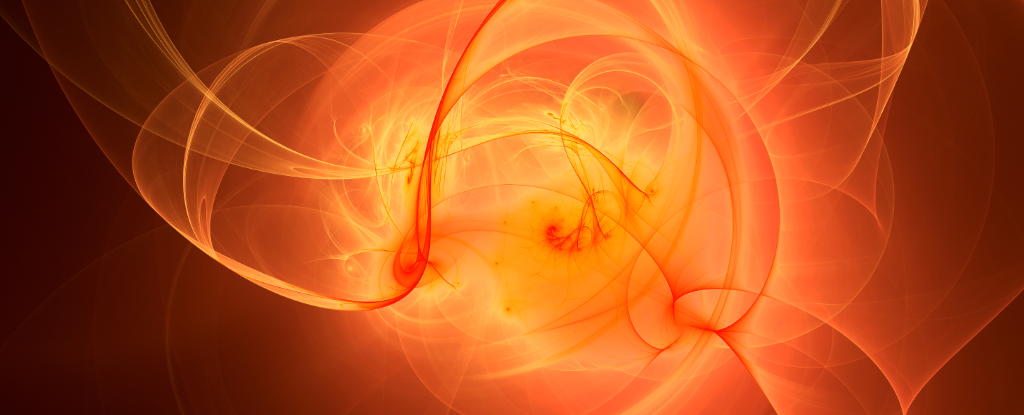
Unofficial reports of 10 antihelium nuclei smacking into the International Space Station have inspired theoretical physicists to speculate beyond our current models in search of an explanation.
While a small handful of cosmic particles might appear trivial, the signature of the antihelium shower is strange enough for researchers to treat the event like a rainstorm in a desert.
In their recently published analysis, scientists from the Perimeter Institute for Theoretical Physics in Canada and Johns Hopkins University in the US make a case for considering physics outside of the currently accepted Standard Model, going as far as suggesting dark matter could be involved.
Since 2011, the Alpha Magnetic Spectrometer (AMS-02) has sat on board the International Space Station, quietly ringing up more than 200 billion cosmic ray events.
While most were run-of-the-mill particles kicked across vast distances of space at high speed, unpublished reports suggest ten of them were anything but typical, consisting of pairs of antiprotons stuck to one or two antineutrons.
Every fundamental particle of ‘ordinary’ matter, such as electrons, neutrinos, and quarks, has a matching counterpart with the same features but an opposite charge: an antiparticle.
Theoretically, antiparticles like positrons, antineutrinos, and antiquarks should have emerged from the Big Bang‘s ovens in more or less the same quantities as electrons and neutrinos and quarks, quickly canceling each other out in a puff of gamma rays.
The fact the Universe consists of far more than an expanding glow of electromagnetic radiation suggests there’s something we don’t quite understand about the balance of primordial matter and antimatter.
Just as it’s possible to squeeze out a fine mist of antimatter using particle colliders here on Earth, nature continues to shed antiprotons and antineutrons in cataclysmic high-energy events. A proportion will even escape to survive annihilation, occasionally colliding with detectors here on Earth.
The alleged AMS-02 detections involved antiprotons and antineutrons in the form of antihelium nuclei – a rare union that would have required the antiparticles to be slow moving and densely packed to give the subatomic particles a chance to bond.
Curiously, for each antihelium nucleus with two antineutrons, an isotope called antihelium-4, there were two with a single antineutron: antihelium-3. Relying solely on established physics, the best researchers have come up with is a measured isotope ratio of 10,000 to one.
Whatever created the two flavors of antimatter isotope and sent them zooming in our direction wasn’t as discriminating in the size of antihelium as known processes, suggesting the initial conditions required the subatomic building blocks to be incredibly slow moving before they were ejected.
One possibility might involve the decay of a currently unknown particle, which might even qualify as dark matter. Even if such a particle existed, there remains the question of how it came to be flying across the cosmos at a fraction of light speed.
Working backward, the researchers theorize that an incredibly hot, rapidly expanding concentration of plasma made from known particles just might deliver both the kick and the right ratio of antihelium nuclei.
While such ‘fireballs’ have never been observed, they might occur in collisions between dark matter masses that contain sufficient quantities of antiquarks.
A second possible scenario involves what are known as ‘dark dwarfs‘. These hypothetical balls of dark photons, dark electrons, and dark neutrons could also come crashing together to create conditions that just might emit antihelium in the measured ratios.
Neither model has been fully fleshed out, consisting of complex dynamics that leave a great deal of discussion over the potential details. And that’s just the physics we know about – dark matter itself is yet to be confirmed as a material phenomenon, let alone understood.
Yet buried in the mathematics of even highly speculative models like this, there could be the seeds of discovery that might turn other unexpected measurements into fireballs of creation generated by colliding darkness.
With another six years of operation, AMS-02 might yet collect data that provides yet another perspective on the origins of this bizarre antihelium shower.
Or it might confirm something unexpected in the far reaches of space is building atoms of antimatter, taunting us from the shadows.
This research was published in Physical Review D.
Related News
EMEA Tribune is not involved in this news article, it is taken from our partners and or from the News Agencies. Copyright and Credit go to the News Agencies, email news@emeatribune.com Follow our WhatsApp verified Channel





